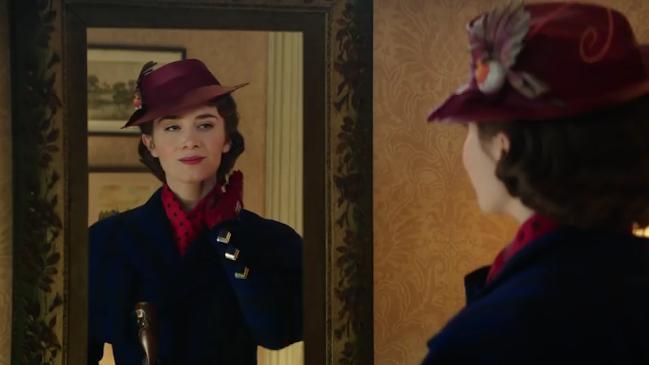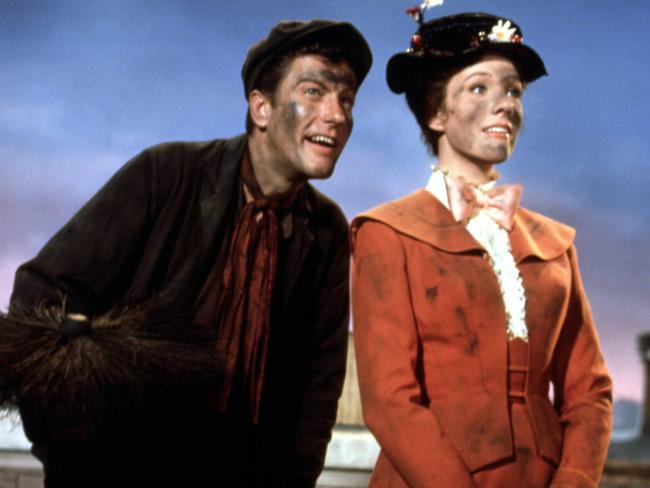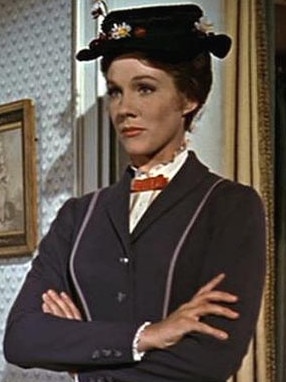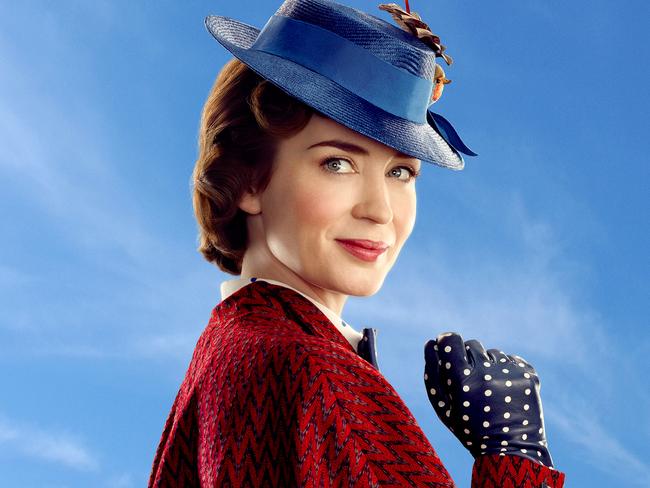Susie O’Brien: Real racism is obscured by trivial pursuits
Ludicrous claims about Mary Poppins “blacking up” have the power to obscure real incidents of racism, writes Susie O’Brien.

Susie O'Brien
Don't miss out on the headlines from Susie O'Brien. Followed categories will be added to My News.
Mary Poppins is racist for putting soot on her face and pretending to be a chimney sweep, a US academic has claimed.
In the 1964 film starring Julie Andrews, Poppins isn’t trying to appear to be a black woman, just a white woman with a dirty face.
And yet this hasn’t stopped Dr Daniel Pollack-Pelzner from claiming Mary Poppins, “is bound up in a blackface performance tradition”.
HOW EMILY BLUNT OVERCAME FEAR OF SINGING IN PUBLIC
THE SECRET BEHIND A DAZZLING MARY POPPINS RETURNS SCENE
LEIGH PAATSCH’S MARY POPPINS RETURNS REVIEW
Poppins’ crime is not just “blacking up” but failing to wipe off soot that covers her face after she’d been up a chimney. It’s completely absurd.
Dr Pollack-Pelzner also objects to a mention of a talking parrot called Hyacinth Macaw because it references a “negro lady” from the 1934 version on the book.
Even Meryl Streep’s turn as Topsy in the remake comes in for condemnation for reflecting Disney’s penchant for evoking “minstrels for its topsy-turvy entertainments — a nanny blacking up, chimney sweeps mocking the upper classes, grinning lamplighters turning work into song”.

I’ve seen the movie and I can’t see any examples of it playing into a “more fraught history from a suppressed part of Mary Poppins’s past”.
Where’s his outrage for the stereotypical characterisation of the white servant classes, including Mary, herself, and the cheerful chimney sweep, Jack? Or the portrayal of the crooked banker, played by Colin Firth? Surely, this is unfair to all honest bankers out there, not to mention classist.
The studied removal of all overt or even implied racism — and there was quite a bit of it — from previous versions of the Mary Poppins movie and books doesn’t rate a mention from Dr Pollack-Pelzner.
It’s part of the political correctness, which has moved from respect for people’s rights and feelings into fantasy land.
We now live in a sad world where even the colour black — as in Baa Baa Black Sheep — is racist, Santa Claus is sexist and you can’t use terms like fireman or blackboard.

Such kneejerk, whistleblowing accusations serve to obscure real racism when it occurs. People are less likely to be sympathetic when real issues of racial stereotyping or prejudice are drawn to their attention when they see scholarly activists dream up examples that don’t exist.
It’s a pity because the damaging power of blackface — white people putting black paint on their faces and pretending to be African-Americans — has a devastating history based on mockery and cruelty.
Blackface originated in minstrel shows that mimicked black slaves, depicting them as lazy, cowardly, ignorant and slovenly.
Its enduring power to stir unrest is illustrated in the US, where a photo from the yearbook of Virginian governor Ralph Northam shows a student with a blackened face standing next to someone dressed as a Klu Klux Klansman.
It was racist and offensive back in 1984 and still is today. After initially apologising for the photo, Northam, a Democrat, now insists he is neither the person in blackface nor the person dressed as the Klansman. But he has admitted to putting boot polish on his face to look like Michael Jackson in the same year.

Although such actions are abhorrent, there is an understanding that acts that are now clearly seen as racist were more acceptable in the past.
That brings us back to Mary Poppins. If Dr Pollack-Pelzner wanted to have a go at the beloved fictional nanny, he could have turned to P.L. Travers’ original books, which are packed full of racist episodes and vignettes.
One chapter from the 1930s has Mary Poppins taking the children around the world, meeting racially stereotyped people in different countries, including “blacks in the South who speak in a picaninny language”.
Travers writes: “ … on the knee of a negro woman sat a little black picaninny with nothing on at all”. This woman is amazed by the white Banks children, and urges Mary Poppins to make them look darker.
“My, but dem’s very white babies. You wan’ use a li’l bit black boot polish on dem,” she says. Such mocking language was often used in minstrel shows.
The scene was rewritten in the 1970s, when there was a growing understanding of the overt racism of such depictions.

So, does that make Travers racist? Yes and no. There is no doubt that such examples cast her in a negative light by today’s standards. Despite this, at other times, she demonstrated a degree of cultural awareness and curiosity that was unusual for women in the 1930s. A socialist bisexual, she spent time with Native Americans hearing traditional stories and was even given an Indian name.
It’s not surprising that Dr Pollack-Pelzner’s article, published in the New York Times, has been soundly discredited.
In any case, doesn’t he realise his own name needs updating? Pollack, surely, is a derivation of Polack, which is now widely regarded as an ethnic slur for people from Poland.
Once you play this game, it’s hard to know where to stop.
Susie O’Brien is a Herald Sun columnist
MORE FROM SUSIE O’BRIEN:
MARIE KONDO, I THINK I LOVE YOU
